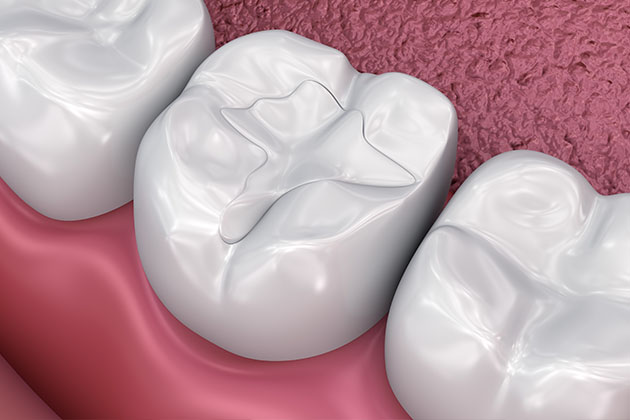科学者たちは、抗菌性を備えたナノ材料を複合充填材料に組み込んでいます。 この新しい充填材は、病原菌による虫歯の再発を効果的に防ぐことができます。
虫歯 (と呼ばれる 歯の cavities or dental caries) is a very common and widespread 細菌性の disease in school-going children and adults. Virulent 細菌 ような ストレプトコッカス·ミュータンス accumulate on the surface of the tooth and start to dissolve hard tissues. Once 細菌 settle on the tooth surface, it leads to secondary (or recurrent) tooth decay at the edges of dental 充填 due to production of acid by cavity-causing 細菌 which now reside in the interface of dental filling and the tooth. Tooth decay caused by bacteria is responsible for failure of dental restoration material affecting 100 million patients every year. Recurrent tooth cavities and decay leads to tooth extraction and root canal treatments.
以前は、金属合金で構成されたアマルガム充填物が歯科修復物に使用されていました。 これらの詰め物にはいくつかありました 抗菌 効果だけでなく、無地、水銀毒性、歯への付着力の欠如という欠点もありました。 現在、コンポジットレジンは歯科用修復材料に使用されていますが、抗菌性に欠けており、大きな欠点となっています。 また、樹脂からの可溶性薬剤の段階的な放出は、それらの機械的特性に影響を及ぼし、多孔性または弱い樹脂をもたらします。 テストされた組み合わせ材料の多くは時間制限があり、特に高用量を必要とするため、隣接する組織に対しても毒性がある可能性があります。 細菌抑制活性を示すレジンベースのコンポジットレジンは、虫歯のような広範囲の口腔疾患の発症を阻止することができます。
28月XNUMX日に発表された研究では ACSアプライドマテリアルとインタフェース, researchers describe a new enhanced material having intrinsic potent 抗菌 capabilities which can be used for novel dental fillings to prevent recurrent tooth decay. Same team of researchers had discovered in their earlier work that self-assembling building block Fmoc-pentafluro-L-phenylalanine-OH (Fmoc) has potent 抗菌 and also anti-inflammatory properties. And, it contains both functional and structural subparts. In the current study, researchers functionally incorporated Fmoc nanoassemblies inside resin-based dental composite material using novel methods developed by them.
抗菌 capabilities of this new filling material was subsequently evaluated. Researchers also analysed its mechanical strength, optical properties and biocompatibility. When resin-based composites are added with antibacterial nano-assemblies it gets the ability to inhibit and hinder growth and viability of 細菌. The new material was non-toxic and the mechanical or optical properties of the nanaoassemblies remains unaffected by the integration. The antibacterial activity against bacterium Sミュータンス 新しい材料の非常に低い投与量が必要でした。
The current study demonstrates 抗菌 activity of Fmoc nanoassemblies and its functional incorporation into dental resin composite filling to develop a biocompatible resin composite amalgamated material. The new filling material is pleasant looking, mechanically rigid, has high purity, is inexpensive and can be easily embedded within resin-based filling materials.
***
{引用元のリストにある以下のDOIリンクをクリックすると、元の研究論文を読むことができます}
ソース
Schnaider、L。etal。 2019.強化されたナノアセンブリ-組み込まれた抗菌複合材料。 ACS Applied Materials&Interfaces。 11(24)。 https://doi.org/10.1021/acsami.9b02839






































